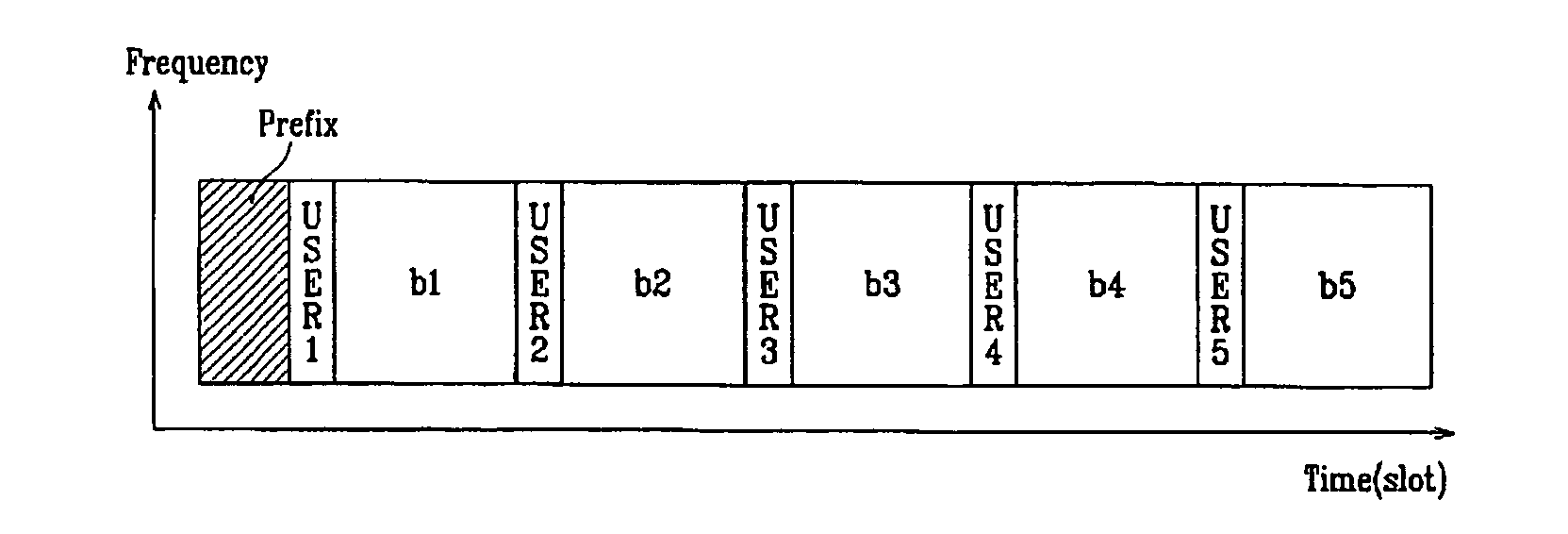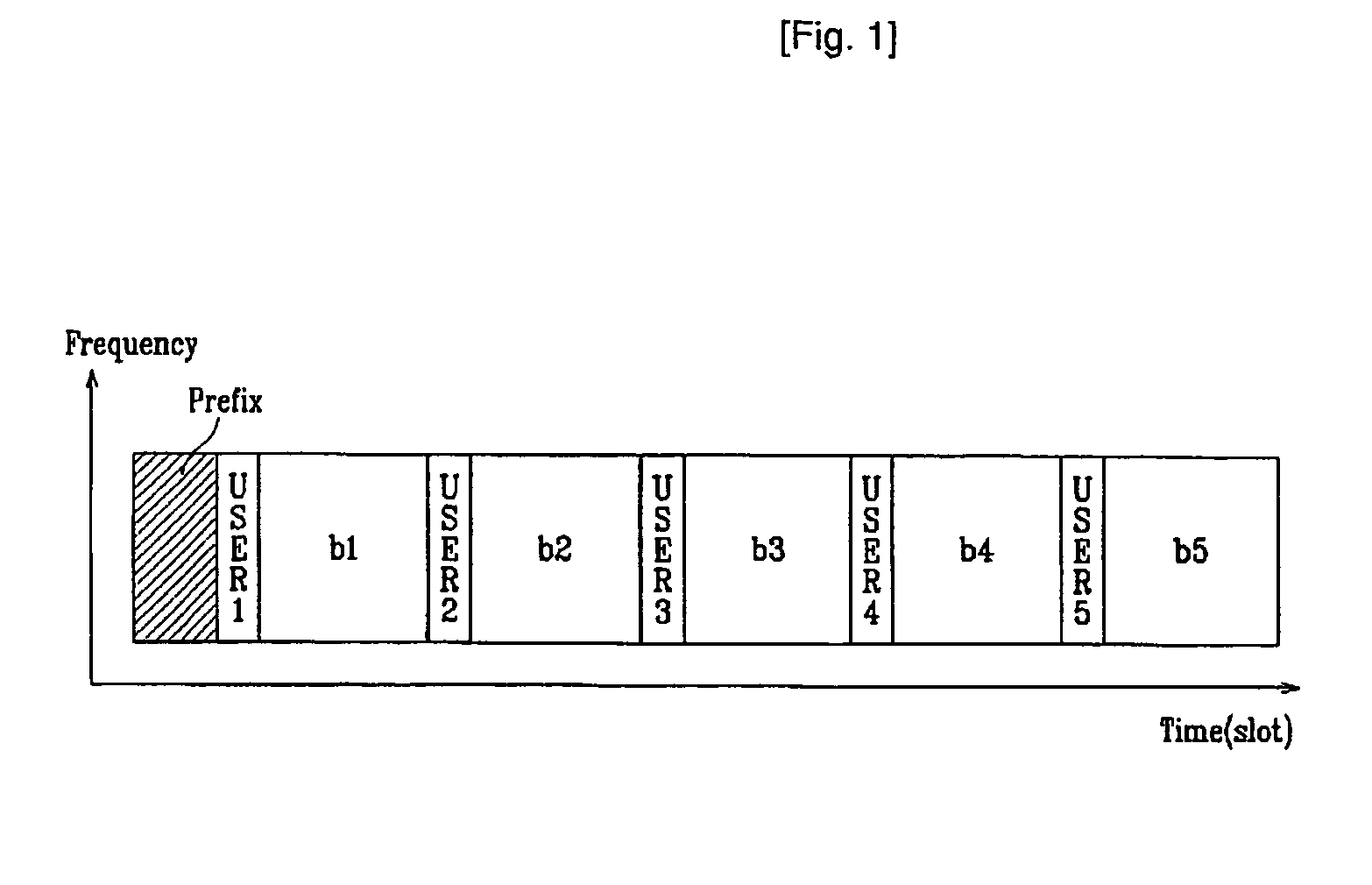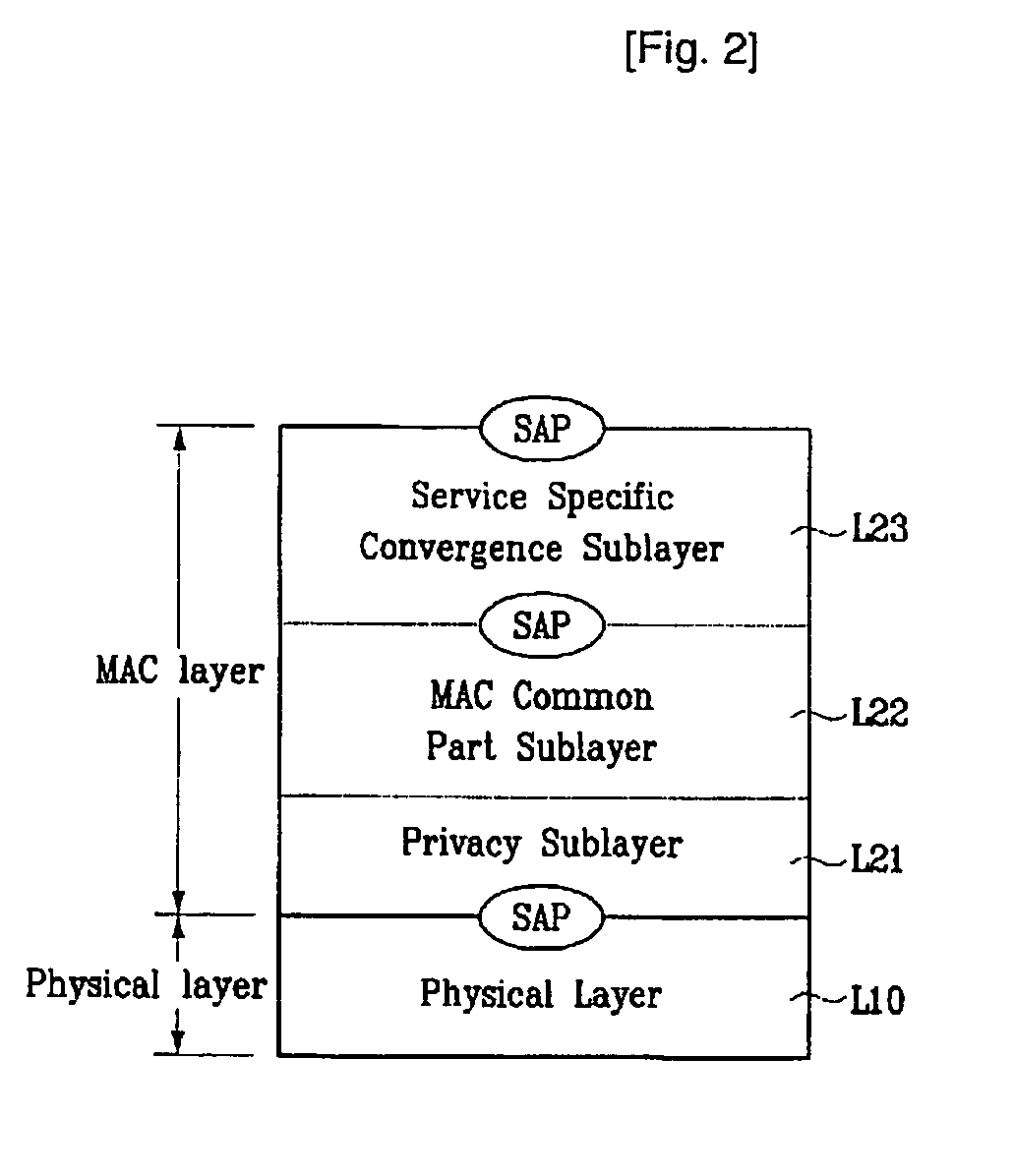Method for Allocating and Accessing Radio Resources in Ofdma System
a radio resource and orthogonal frequency division multiple access technology, applied in power management, high-level techniques, wireless commuication services, etc., can solve the problems of pipeline delay, undesired power consumption, and subscriber stations receiving undesired bursts, so as to save power consumption, minimize residual resources, and save power of subscriber stations
- Summary
- Abstract
- Description
- Claims
- Application Information
AI Technical Summary
Benefits of technology
Problems solved by technology
Method used
Image
Examples
Embodiment Construction
[0047]In the following detailed description, only the preferred embodiment of the invention has been shown and described, simply by way of illustration of the best mode contemplated by the inventor(s) of carrying out the invention. As will be realized, the invention is capable of modification in various obvious respects, all without departing from the invention. Accordingly, the drawings and description are to be regarded as illustrative in nature, and not restrictive. To clarify the present invention, parts which are not described in the specification are omitted, and parts for which similar descriptions are provided have the same reference numerals.
[0048]A radio resource allocation method according to an exemplary embodiment of the present invention will be described with reference to drawings.
[0049]FIGS. 6 and 7 show radio resource allocation according to an exemplary embodiment of the present invention.
[0050]As to resource allocation according to an exemplary embodiment of the p...
PUM
 Login to View More
Login to View More Abstract
Description
Claims
Application Information
 Login to View More
Login to View More - R&D
- Intellectual Property
- Life Sciences
- Materials
- Tech Scout
- Unparalleled Data Quality
- Higher Quality Content
- 60% Fewer Hallucinations
Browse by: Latest US Patents, China's latest patents, Technical Efficacy Thesaurus, Application Domain, Technology Topic, Popular Technical Reports.
© 2025 PatSnap. All rights reserved.Legal|Privacy policy|Modern Slavery Act Transparency Statement|Sitemap|About US| Contact US: help@patsnap.com



